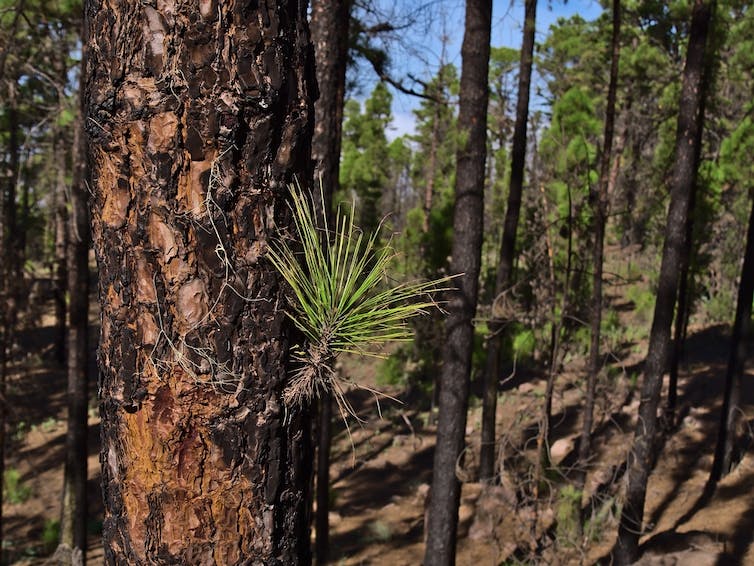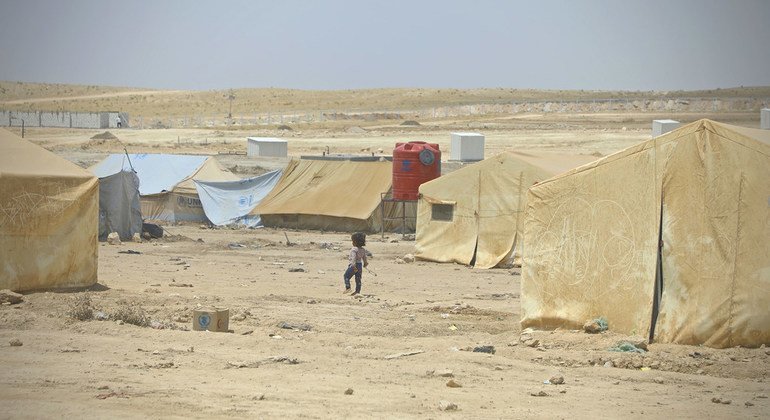Summer 2023 has seen wildfire crews tirelessly battle forest fires worldwide. The Canary Islands, a Spanish archipelago off the Moroccan coast, have faced their worst fires in 40 years, but amid the devastation lies a remarkable tale of resilience.
The Canary Islands consist of seven islands, including the popular holiday destinations of Tenerife, Gran Canaria and Fuerteventura. Increased drought and higher temperatures driven by climate change have strained communities and wildlife here. Approximately 6% of Tenerife has been scorched by fire and more than 26,000 residents displaced by fires during 2023. But unlike people, plants cannot escape the harsh conditions.
A harsh environment is not a new phenomenon on the Canary Islands, though. Throughout their history these islands have experienced volcanic eruptions (such as the 2021 eruption of La Palma) and brutal droughts. Before people arrived, wildfires would ignite due to volcanic activity or lightning strikes. Fires were a part of a natural cycle. As such, a number of the island’s native species (which make up 40% of plants on the island today) have adapted over millions of years to weather these destructive events.
As climate change brings ever more frequent fires, can these adaptations help the island’s native flora survive?
Fire-resistant armour
Over millions of years evolution has come up with a few tricks to survive environmental disasters. There are two main strategies when it comes to wildfires. The first kind protects adult plants from the flames, ensuring their survival. The second aims to help forests recover quickly from a fire by producing new offspring.
One species that employs both these strategies is the endemic Canarian pine (Pinus canariensis). Pine woodlands cover 60% of the archipelago and are the vegetation most affected by wildfire. But due to its adaptive features, the Canarian pine is regarded as one of the most fire-resistant trees on Earth.
T. Schneider/Shutterstock
Canarian pines drop their lower branches as they age, preventing fires from climbing up their trunks. They also have thick, heat-insulating bark which acts as a shield against flames – protecting the living tissue within.
One study found that after the 2007 wildfires in Tenerife there were no dead mature trees – even those trees with more than 70% of their canopy torched had survived.
After a fire, Canarian pines swiftly regenerate. The trees reserve energy as starch within the soft living flesh of the tree specifically for these occasions and sprout buds from beneath their bark which otherwise lie dormant.
The destruction caused by wildfires creates competition between the plants that do survive to reproduce quickly and fill the scorched, empty spaces. Canarian pines achieve this with cones that contain seeds enclosed by a resin only fire can melt, at which point the seeds are released onto the bare soil below.
Many smaller plants that inhabit the floor of these pine forests have seeds that can survive wildfires too. Once the fire has passed, they rapidly grow to exploit the bare earth. A lotus plant creates a yellow canvas of flowers only a few months post-fire.

Aimnair/iNaturalist
A hotter, drier future
Unfortunately, these adaptations have limits. The combination of human activity, such as campsites or arson, and climate change is presenting new challenges compared with the natural fires these plants evolved with.
Prolonged droughts, driven partly by shifting weather patterns associated with climate change, have worsened conditions in the Canary Islands, increasing the frequency of fires beyond the capacity of forest ecosystems to regenerate. The pressure on forests is compounded by invasive species, ravenous goats and rabbits and the conversion of wild lands into farms and towns.
As well as burning away vegetation, wildfires harm the soil and can contaminate water, as well as destroy vegetation which helps keep water in the environment, spurring drought. With a staggering 20% of the archipelago’s native flora currently classified as “endangered” on the IUCN Red List, urgent efforts are needed to ensure the continued survival of these unique species.
Most native species do not possess the adaptations that allow some to withstand wildfires on the Canary Islands. And even those that do are struggling with fire seasons evolution never prepared them for.

Don’t have time to read about climate change as much as you’d like?
Get a weekly roundup in your inbox instead. Every Wednesday, The Conversation’s environment editor writes Imagine, a short email that goes a little deeper into just one climate issue. Join the 20,000+ readers who’ve subscribed so far.




